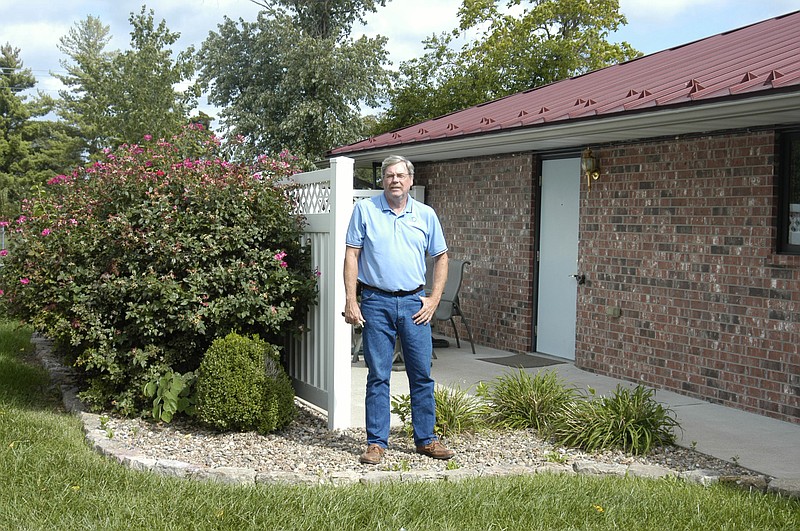By DAVID A. WILSON
Democrat Staff
Darrell Henrickson, Environmental Public Health Specialist with the Moniteau County Health Center, advises everyone to take adequate safety measures when outside during a storm.
"Take adequate safety precautions if there is thunder or lightning even in the distance," Hendrickson said.
This advice doesn't have much to do with his work, which is diverse involving all sorts of environmental checks in the county. He is probably best known for doing food service inspections and water sample tests.
His advice actually comes as a result of personal experience from being struck by lightning.
In 1982, a party of four hunters and one hunting dog were quail hunting in November 1982. They were in a 40-acre soybean field near Kirksville.
While they were hunting in a light rain, the rain got heavier. The thunder and lightning got closer.
"We realized we were in trouble so we spread out and tried to make it back to the vehicles," Hendrickson said. "I was soaking wet and the tallest thing in the soybean field,"
A lightning bolt dropped Hendrickson, and Sam, the one nearest him in their tracks. But the blast was strong enough to knock all of them down. Even Mike, who was about 30 yards ahead helping the dog cross a fence, was knocked to his knees.
The hit Sam took left him wandering around really confused. He also suffered burns to one eye and his shin. Hendrickson apparently took a direct hit.
"I'm really telling the story as I've been told," Hendrickson said. "I don't even remember going hunting that day."
The immediate thing that needed to be done was to get his heart beating again, since the lightning had stopped it. Mike didn't know the area, but had fortunately just taken a CPR class. He stayed with Sam and did CPR on Hendrickson. The fourth member of the party, who knew the area, went to get help.
It took quite awhile for the paramedics to respond. They couldn't get the ambulance very close so they had a lengthy trek across the wet fields. They arrived at the scene and transported Hendrickson to a Kirksville hospital. There he was treated for burns and nerve damage. That was followed with 30 days of rehabilitation, then surgery to rebuild his right ear drum.
The one thing that helped him survive the lightning hit with only a little lasting damage was the fact that he was soaked. The electricity stayed in the wet clothes and on the skin surface. Although the burns were bad, they weren't deep. Although at first there was discussion of possible skin grafts, they turned out to be unnecessary.
Hendrickson said the back of his mesh cap was melted. The burns started around his shoulders and went to his ankles. Evidently, the lightning went down his wet clothes and skin to the wet leather boots which grounded him in the wet soybean stubble.
"It blew my boots off," Hendrickson said. "My clothes were shredded."
He commented that the medical and nursing staff came in twice a day and scraped off the burned skin and applied some kind of burn cream. Possibly as a result of that medical treatment, he ended up with few scars. He had some apparent nerve damage to his left leg. He eventually regained full use of it.
Hendrickson said 10 years after the event, the four of them were at a restaurant when someone at the next table took a flash photograph.
"We all ducked," he said.
He commented that the dog they had with them wasn't much good for hunting before the lightning strike and it certainly wasn't any better afterwards.
After Hendrickson's shotgun was cleaned off, it turned out to not be damaged.
"I still quail hunt," he said. "I just don't do it in the rain."

